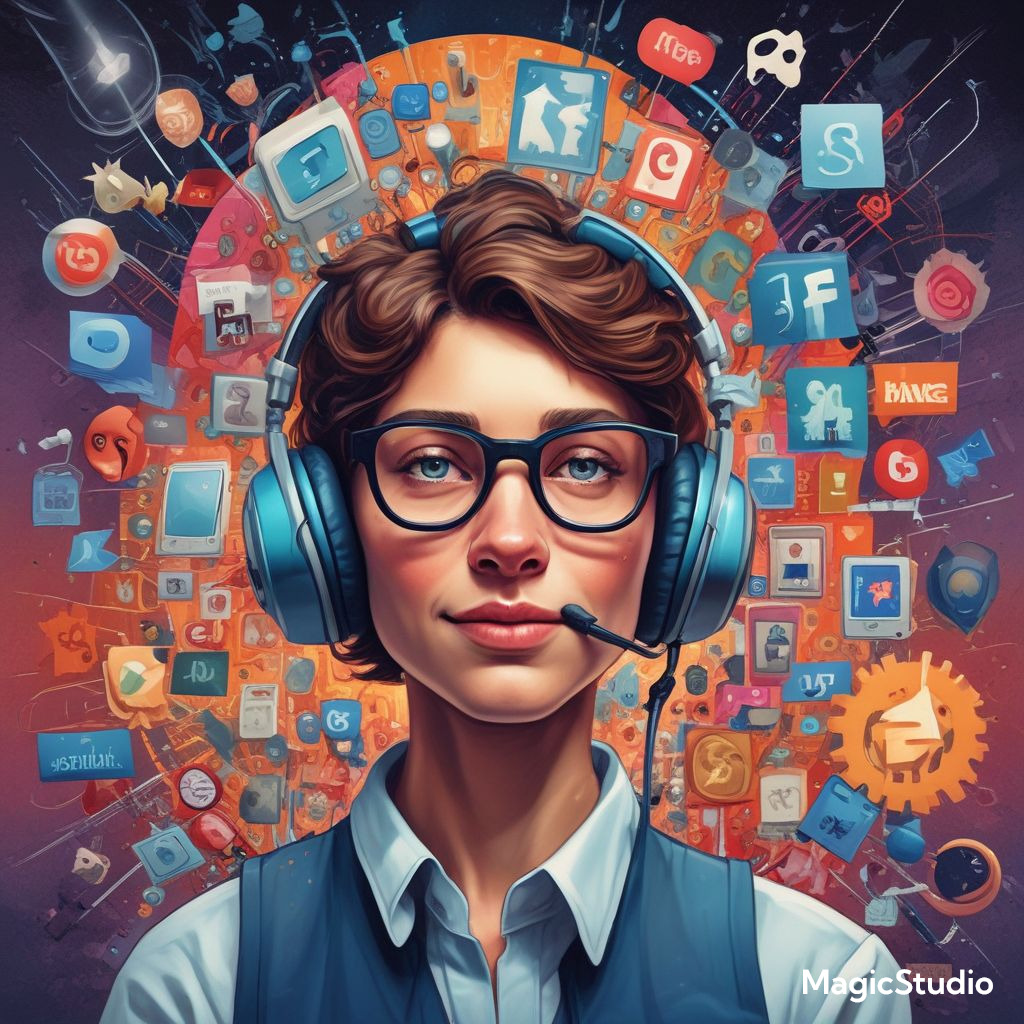The Future of Social Media: Trends to Watch in 2025

Social media has drastically changed how we communicate, consume content, and interact with brands. As we move into 2025, new trends are emerging, and social platforms are evolving at a rapid pace. In this post, we’ll explore the key social media trends that are shaping the future and what you can expect in the coming years.
1. The Rise of Short-Form Video Content
Short-form video content, made popular by platforms like TikTok and Instagram Reels, has taken the digital world by storm. In 2025, short-form videos will become even more prevalent across social media channels, as consumers crave quick, engaging content that is easy to digest.
What to expect:
- Increased Engagement: With short-form videos gaining popularity, brands and influencers will use these platforms to engage audiences with bite-sized stories, tutorials, and product showcases.
- Interactive Features: Expect to see more interactive video features, like polls, challenges, and live interactions, making videos even more engaging and personalized.
- User-Generated Content: Short-form videos will empower users to create and share their own content, encouraging greater participation in trends and challenges.
Why it matters: Short-form video content is here to stay, and businesses that can create engaging, shareable videos will see better engagement and brand awareness. It’s the perfect way to capture the attention of modern consumers who prefer quick, visual content.
2. Social Media E-Commerce: Shopping Without Leaving the App
Social media platforms are increasingly becoming shopping hubs, and by 2025, social commerce will be more integrated into platforms like Instagram, Facebook, and TikTok. Users will be able to discover, browse, and purchase products without ever leaving their favorite social apps.
What to expect:
- Shoppable Posts: Instagram and TikTok are already experimenting with shoppable posts, and in 2025, this will become a standard feature, making it easier for users to buy products directly from their feeds.
- Augmented Reality (AR) Shopping: Expect to see more AR shopping experiences, where users can virtually try on products, such as makeup or clothing, before making a purchase.
- Social Media Marketplaces: Platforms like Facebook Marketplace will expand, offering users the ability to buy and sell directly within the social media app, making it more seamless to shop from trusted sources.
Why it matters: Social media e-commerce is transforming the way brands reach customers. With a significant rise in social commerce, businesses will need to adapt by making their products more accessible and engaging on social platforms.
3. The Growth of Niche Social Media Platforms
While giants like Facebook, Instagram, and Twitter dominate social media, niche platforms are gaining popularity, providing unique, community-driven experiences. By 2025, we’ll see a greater emphasis on specialized networks focused on specific interests, hobbies, or industries.
What to expect:
- Specialized Communities: Platforms focused on niche topics such as gaming, fitness, wellness, or finance will continue to thrive, allowing users to connect more deeply with others who share their passions.
- Smaller, More Engaged Audiences: Niche platforms allow for more meaningful connections and deeper engagement, as users tend to be more dedicated and passionate about the topics at hand.
- Targeted Content: As these smaller networks grow, content creators and brands will increasingly target these niche groups, providing personalized, high-quality content that resonates with specific audiences.
Why it matters: Niche social media platforms provide valuable opportunities for businesses to engage with highly targeted audiences. By focusing on smaller, more engaged communities, brands can foster deeper relationships and create stronger brand loyalty.
4. Social Media as a News and Information Hub
Social media has already become a key source of news for millions of people, and by 2025, this trend will continue to grow. Platforms like Twitter, Facebook, and LinkedIn are expected to play an even more significant role in the dissemination of news, updates, and information.
What to expect:
- Real-Time Reporting: Social media platforms will continue to provide real-time updates on breaking news, offering users the ability to stay informed as events unfold.
- News Aggregators: Expect to see more AI-powered news aggregation tools on social media, curating content that aligns with users’ interests and preferences.
- Increased Role of Influencers: Influencers will become even more important as trusted sources of news and information, providing updates and perspectives on current events in a more personalized way.
Why it matters: As social media becomes an even more important platform for news consumption, businesses need to stay informed and adapt their strategies to leverage real-time information. This can help improve brand visibility, engagement, and reputation.
5. AI-Driven Social Media Content Creation
Artificial intelligence is revolutionizing how content is created and shared on social media. By 2025, AI tools will be a staple in the toolkit of content creators, helping them optimize their posts, create videos, and engage with their audience more effectively.
What to expect:
- AI Content Generation: AI tools will assist creators in generating engaging text, images, and videos, speeding up content creation and increasing output.
- Personalized Content Recommendations: AI algorithms will become even more sophisticated, offering users highly personalized content recommendations based on their behavior and preferences.
- Chatbots and Automated Interaction: Social media platforms will use AI-driven chatbots to handle customer interactions, answer questions, and provide support 24/7, improving user experiences.
Why it matters: AI-driven content creation will enable businesses and creators to produce high-quality, engaging content faster and more efficiently. As social media becomes more crowded, leveraging AI to personalize content and optimize engagement will be essential for success.
6. Privacy and Data Protection: The Rise of Social Media Regulations
As privacy concerns grow, social media platforms will face increased scrutiny and regulation. In 2025, we can expect more stringent privacy laws and policies to be implemented, giving users greater control over their data and online presence.
What to expect:
- Stricter Data Policies: Platforms will need to comply with more robust data protection laws, requiring them to be transparent about how they collect, use, and store user data.
- Enhanced Privacy Features: Social media apps will introduce new privacy controls, such as better data encryption, improved consent features, and more transparent data-sharing options.
- User-Controlled Algorithms: Users will have more control over the algorithms that dictate what content they see, giving them the ability to customize their experience to prioritize privacy and personal preferences.
Why it matters: As privacy becomes a major concern for social media users, platforms that prioritize data protection will gain a competitive edge. Brands will need to navigate these changes carefully to maintain user trust and comply with evolving regulations.
Conclusion: The Evolving Landscape of Social Media
The social media landscape is constantly changing, with new trends emerging all the time. From the rise of short-form videos and social commerce to the growth of niche platforms and AI-driven content, social media is becoming more dynamic and diverse. By staying ahead of these trends, brands and creators can adapt to the future of social media, engage with their audience more effectively, and build long-lasting relationships.



